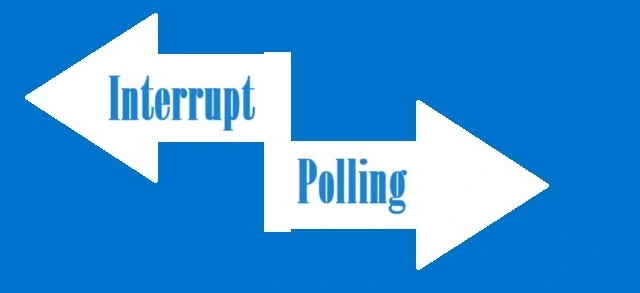
Software Polling: Concept, Working, Advantages, and Limitations
In computer systems, managing Input/Output (I/O) operations efficiently is crucial. When multiple I/O modules can generate interrupts, the processor needs a way to identify which device requested the interrupt. One method to achieve this is known as Software Polling.
This concept is important for competitive exams like GATE, PSU, and IES, as it lies under the Computer Organization and Architecture (COA) topic of I/O techniques.
What is Software Polling?
Software Polling is a method used to identify the I/O module that generated an interrupt request. When an interrupt occurs, the processor does not immediately know which device triggered it. In software polling, the processor systematically checks (polls) each I/O module until it finds the one that raised the interrupt.
Working of Software Polling (Step-by-Step)
Interrupt Occurs – An I/O device signals the processor that it requires attention.
Branch to ISR – The processor suspends its current execution and branches to a general interrupt service routine (ISR).
Polling Process –
The processor checks each I/O module in sequence.
This can be done by issuing a special TEST I/O command with the address of a module placed on address lines.
Alternatively, the processor may read an addressable status register of each I/O module to see if the interrupt bit is set.
Identification – The I/O module that responds positively is identified as the source.
Device-Specific ISR – The processor then branches to the specific service routine of that device to handle the request.
Characteristics of Software Polling
Implemented entirely in software, no special priority hardware needed.
Sequential search → time to identify device grows with the number of I/O modules.
Requires status registers or test commands for each device.
Advantages of Software Polling
Simple to implement – No need for complex priority hardware.
Flexible – Can handle multiple devices of varying types.
Low hardware cost – Uses software routines instead of extra circuitry.
Disadvantages of Software Polling
Time-consuming – Processor must check all devices one by one.
Worst case = number of I/O modules.
Higher interrupt latency – Response time increases with more devices.
Inefficient for large systems – Not suitable when many devices are connected.
Software Polling vs Hardware Polling
| Feature | Software Polling | Hardware Polling |
|---|---|---|
| Implementation | Done by software (ISR checks devices) | Dedicated hardware circuitry |
| Speed | Slower (sequential check) | Faster (priority encoded in hardware) |
| Cost | Cheaper (no extra hardware) | More expensive (extra hardware required) |
| Scalability | Poor (latency increases with devices) | Good (priority resolution faster) |
| Use case | Small/simple systems | Larger systems needing faster response |
Applications of Software Polling
Embedded systems with a few I/O devices.
Early computer systems before hardware prioritization was common.
Teaching/learning systems where simplicity is preferred.
Important Exam Pointers
Software polling = CPU checks each I/O module after an interrupt.
Uses TEST I/O command or status register checking.
Main drawback = time-consuming (latency proportional to number of devices).
Compared with hardware polling and vectored interrupts in exams.
Conclusion
Software Polling is a straightforward but time-inefficient method for identifying interrupting I/O devices. It is easy to implement and cost-effective but becomes impractical in large systems with many peripherals. For competitive exams, focus on its working mechanism, disadvantages, and comparison with hardware polling and vectored interrupts.